The Beckman Coulter AU640 Chemistry system, formerly the Olympus AU640 boasts over 90
assays with a maximum throughput of 800 tests per hour. The AU family of systems are well-regarded, open reagent, high-quality chemistry systems that are considered one of the most popular
chemistry systems on the market, in particular in the US laboratory marketplace. Chemistry
analyzers measure substances within bodily fluids to establish a pattern of abnormalities. The wide
range of tests can be grouped under several categories such as electrolytes, enzymes, blood sugar,
metabolites, thyroids, hormones, lipids, therapeutic drug monitoring, and drugs of abuse monitoring.
This analysis can be conducted on blood (either whole, serum, or plasma), urine, semen, or
cerebrospinal fluids Chemistry analysis begins with the patient sample placed in separate capsules, test
tubes, slides, or sample cups that are transported on a conveyor with sample racks or in a carousel
in a reagent tray. Specimens are sampled and then mixed automatically together with diluents and
reagents in a reaction cuvette. The reagents are pulled from a reagent carousel, which is typically
refrigerated to keep the reagent’s shelf life longer. The reactive cuvette is stored and processed in
the Reaction carousel. The Reaction carousel holds the mixing station (which mixes samples and
reagents) and wash station (which rinses the cuvettes). Dependent on the manufacturer, the cuvette
is either made of glass or plastic, but must be optically clear so that light may pass through without
any intervention from scratches or blemishes. Chemistry analysis is calculated through the absorbance
of the specific wavelengths as light is passed through the specimen. All chemistry analyzers possess
a photometer (either filter photometer or spectrophotometer) that conducts the measurement of the
light absorbance of the specimen, and results are calculated. Filter photometers use glass filters, on
a rotating filter wheel, coated with colored material while spectrophotometers use prisms or gratings,
to isolate these wavelengths from the scanner beam. In both cases, a lamp (typically halogen) is the
light source. Spectrophotometry is a more commonly used method than Filter photometry, which is
currently only used in J&J, Roche Cobas, and Siemens Dimension systems. Spectrophotometry is
used in most other systems including Abbott, Beckman and Roche Hitachi systems. The process to
attain the results from the absorbance tests are classified either as End Point or Kinetic. End point
method incubates the reaction mixture for a predetermined amount of time to reach the end point, or
equilibrium of the reaction. Kinetic method, as the reagents and the sample are mixed, the reaction
is monitored, the rate of change in absorbance is then determined and related to analyte
concentration. As such, Kinetic is a faster method than End Point.

IED Medical Group is a Texas-based LLC (since 2002) specializing in global distribution of clinical lab equipment and consumables, committed to customer satisfaction and expanding in the medical market. Member of Houston Chamber of Commerce.